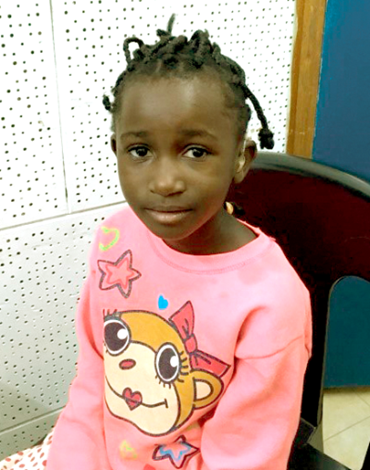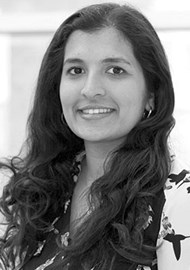According to the WHO, only 3% of people in developing countries who require hearing aids have one. Over the years many people, organisations and companies have donated old hearing aids to charities. Bhavisha Parmar, an audiologist who volunteered with Sound Seekers in Africa for a year, shares the process adopted by the charity to refurbish and utilise the aids and advises us how best to help the process.
Sound Seekers (The Commonwealth Society for the Deaf) is a small UK registered charity working in some of the poorest communities in Malawi, Zambia, The Gambia, Sierra Leone and Cameroon. Our mission is to help people with hearing loss realise their rights by enabling access to healthcare and education. We partner with health service providers and schools to establish sustainable hearing care services and improve the quality of education for children with hearing loss. We also work with communities to advocate for equal opportunities for people with hearing loss and address the associated stigma and discrimination.
In 2015, Specsavers supported Sound Seekers in establishing a hearing aid refurbishment project (HARP) to refurbish donated digital hearing aids for people diagnosed with hearing loss in the Sound Seekers programme countries, who would otherwise have limited or no access to this type of intervention.
“WHO has estimated that by 2050, over 900 million people in the world will have disabling hearing loss.”
There are currently 466 million people in the world with disabling hearing loss, with the majority residing in low and middle-income countries (LMIC). The World Health Organisation (WHO) estimates around 74 million people in LMICs need hearing aids.
In most developed countries the assessment and rehabilitation of a person with hearing loss involves a holistic approach, combining medical care with the necessary counselling and, in many cases, the provision of assistive technology in the form of hearing aids. The fitting of hearing devices itself is a multi-stage process with ear mould provision, fitting and post-fitting follow-up for adjustments and counselling. Despite the prevalence of hearing loss being far higher in LMICs, less than 3% of people who need a hearing aid actually have access to one [1]. These numbers will only increase, as WHO has estimated that by 2050, over 900 million people in the world will have disabling hearing loss.
It is important for policy makers to acknowledge that people using hearing aids or listening devices in LMICs experience significant educational, social and economic improvements [2]. Therefore, investing in the provision of this service will have long-term benefits, not only at an individual level, but also at community and national levels.
“Investing in the provision of this service will have long-term benefits, not only at an individual level, but also at community and national levels.”
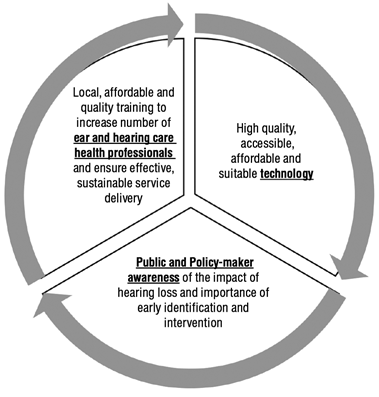
Figure 1. Three key interlinked strategies that are necessary to enhance the provision of ear and hearing care services in LMICs.
Taking a comprehensive approach, Sound Seekers has been working towards enhancing provision of hearing health services for people with hearing loss, alongside enabling access to quality and inclusive education for children with hearing loss, and creating awareness at community, local and national levels on the needs and rights of people with hearing loss. However, there are still many challenges. Figure 1 outlines three crucial strategies that need to come together to overcome the barriers in the development and provision of hearing healthcare services in LMICs. One of the barriers is the lack of suitable assistive listening devices such as hearing aids.
With the support of Specsavers, Sound Seekers’ HARP is currently meeting this huge need and is a vital interim solution until affordable, suitable, digital hearing aid technology can be made available publicly in LMICs. Each of the five Sound Seekers’ country programmes rely on refurbished hearing aids from the HARP or from donations from funding partners such as Hear the World Foundation. Sound Seekers has developed the capacity of the audio technicians at Beit Cure Hospital, Zambia, where the HARP is based, to complete the processes that transform a used donated hearing aid to a refurbished one fit for use (see Figure 2).

Figure 2. HARP process diagram detailing steps from receiving a hearing aid
donation to its distribution in one of the Sound Seekers project countries.
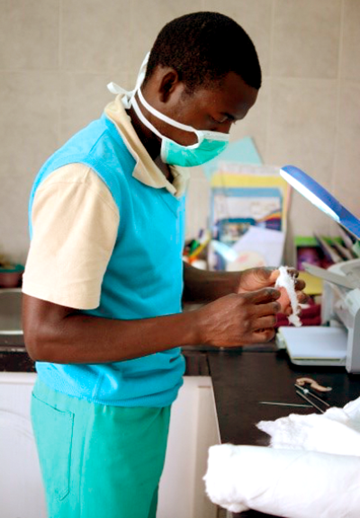
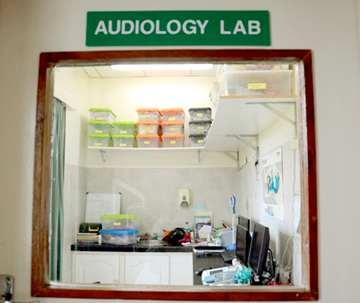
Figure 3 (Top and above). HARP technician, Gideon Daka, refurbishing a hearing aid
at the HARP lab within Beit Cure Hospital, Lusaka, Zambia.
Since the HARP’s inception in 2015, Sound Seekers has received over 20,000 donated hearing aids from Specsavers Hearing Stores, NHS hospitals and individuals. Of these, approximately 4% were unusable (due to damage beyond repair).
So far, 8122 hearing aids have been cleaned, fixed and refurbished. Of these, 3190 have been distributed between seven different African countries and the rest are waiting to be dispatched.
Case Study
Faith Soloi, age seven, from Zambia
Faith had sudden hearing loss since she had malaria at age four and was treated with quinine. Faith was diagnosed with moderate to severe sensorineural hearing loss in March 2018 at University Teaching Hospitals Children’s Clinic where and she was fitted with refurbished digital hearing aids by Naomi Elliott, Sound Seekers Volunteer Paediatric Audiologist in Zambia.
Naomi saw Faith for a follow-up appointment and her mother reported that she is getting great benefit from wearing the hearing aids and she no longer has to shout to communicate with her. Faith’s teachers have also commented on her improvement at school.
While the HARP process has been refined and adjusted over the years, there are still some challenges. Firstly, donated hearing aids are often donated without key components such as the hearing aid hook or battery compartment. Such a hearing aid proves unusable unless spare parts can be found or ordered. Secondly, digital hearing aids from the NHS audiology departments require particular programming accessories and software without which, there results a delay in refurbishment and subsequent fitting.
“Donated hearing aids are often sent to the UK office without key components such as the hearing aid hook or battery compartment.”
Finally, we receive a significantly lower number of donations of high-powered hearing aids. In fact, this year 81% of hearing aids refurbished by the HARP were of the mild/moderate power category. Due to the absence of hearing screening programmes in LMICs, accompanied by an overall lack of awareness of the impact of hearing loss and intervention options, hearing loss is often diagnosed very late or only when the severity is affecting many aspects of the person’s life. This increases the demand for high-powered hearing aids across all project sites. Sound Seekers is working on ways to obtain donations of higher powered hearing aids from clinics and hearing aid companies in order to address this challenge.
If you would like to donate hearing aids or batteries and accessories, please contact us on help@sound-seekers.org.uk or +44 (0)20 7833 0035. If eligible for the HARP or our projects, donated hearing aids and batteries, can be posted to:
Sound Seekers, UCL Ear Institute
332-336 Grays Inn Road London,
WC1X 8EE
Please remember the following steps before sending equipment/devices:
- Remove batteries and old tubing from the hearing aid.
- Ensure hearing aid hook is attached to the device.
- We accept hearing aids of all manufacturer/model but please only send behind-the-ear hearing aids rather than in-the ear hearing aids as these cannot be reused (feel free to contact the team first if you are unsure what to send).
- We are always in need of programming cables, programming shoes, hearing aid software, hearing aid batteries (in-date), hooks and unused tubing so if you have any spares please do send them.
- Please leave a note in the parcel with details of the sender/hospital.
Thank you for donating hearing aids to help us to continue the HARP so more people in developing countries can access refurbished hearing aids, which is changing lives.
References
1. World Health Organization. Millions of people in the world have hearing loss that can be treated or prevented.
www.who.int/pbd/deafness/
news/Millionslivewithhearingloss.pdf
Last accessed July 2018.
2. Borg J, Ostergren PO, Larsson S, et al. Assistive technology use is associated with reduced capability poverty: a cross-sectional study in Bangladesh. Disabil Rehabil Assist Technol 2012;7(2):112-121.
Declaration of competing interests: None declared.

